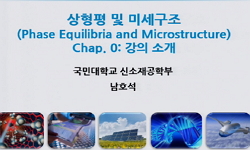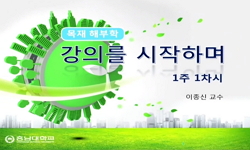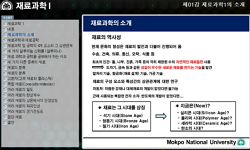고온수열에 의해 열화된 고강도 콘크리트는 미세균열, 중성화 등으로 강도 및 내구성 열화가 발생될 수밖에 없고, 향후 이로 인한 보강철근의 부식 및 수명저하 등이 예상된다. 하지만, 이러...
http://chineseinput.net/에서 pinyin(병음)방식으로 중국어를 변환할 수 있습니다.
변환된 중국어를 복사하여 사용하시면 됩니다.
- 中文 을 입력하시려면 zhongwen을 입력하시고 space를누르시면됩니다.
- 北京 을 입력하시려면 beijing을 입력하시고 space를 누르시면 됩니다.
https://www.riss.kr/link?id=A102885852
- 저자
- 발행기관
- 학술지명
- 권호사항
-
발행연도
2017
-
작성언어
Korean
- 주제어
-
등재정보
KCI등재
-
자료형태
학술저널
-
수록면
295-302(8쪽)
-
KCI 피인용횟수
0
- 제공처
-
0
상세조회 -
0
다운로드
부가정보
국문 초록 (Abstract)
고온수열에 의해 열화된 고강도 콘크리트는 미세균열, 중성화 등으로 강도 및 내구성 열화가 발생될 수밖에 없고, 향후 이로 인한 보강철근의 부식 및 수명저하 등이 예상된다. 하지만, 이러한 고온수열로 열화된 고강도 콘크리트의 강도 및 내구성회복과 연관한 연구는 매우 드문 실정이다. 특히, 기존 중성화된 콘크리트의 알칼리회복제(Alkali Recovery Agent, 이하 ARA)를 사용하여 콘크리트의 알칼리성을 재부여하고 철근부식을 방지하는 기술들이 실용화되고 있는 상황이다. 따라서 이러한 ARA를 고온수열로 중성화된 고강도 콘크리트에 활용시 제반 물리적, 역학적 특성의 변화가 기대되나, 아직까지 이와 연관된 연구가 미흡한 실정이다. 그러므로 본 연구에서는 고온수열을 받은 고강도 콘크리트의 성능 회복을 위하여 ARA 종류 및 화재후 재양생 방법을 변화시켜 이들이 수열온도 단계별 고강도 콘크리트의 압축강도, 탄성특성 그리고 미세구조에 미치는 영향을 고찰하고자 한다.
다국어 초록 (Multilingual Abstract)
This paper is to investigate experimentally the effect of alkali recovery agents and post fire curing methods on mechanical properties and micro-structures of the high strength concrete subjected to elevated temperature. High strength concrete with 60...
This paper is to investigate experimentally the effect of alkali recovery agents and post fire curing methods on mechanical properties and micro-structures of the high strength concrete subjected to elevated temperature. High strength concrete with 60 MPa was fabricated and exposed to 300, 600 and 900℃ after 28 days. Three different types of alkali recovery agents(ARA) including solium silicate and lithium silicate were applied, and water and air curing were also adopted for post fire curing after 28 days since fire test. Compressive strength, strain-stress relationship, SEM, Porosity by MIP and XRD were measured before and after fire test. Test results indicate that applying of ARA and post curing resulted in the increase of residual strength and modulus of elasticity under 300℃ compared with those without ARA and post curing after heated, while compressive strength and modulus of elasticity of ARA applied concrete at above 600℃ was lower those before fire test. Concrete applying modified sodium silicate based ARA(NS-Top) shows most favorable performance in strength recovery. According to SEM and porosity observation, applying ARA helps the concrete regain an alkalinity and thus, small pores below 0.1 ㎛ were increased remarkably while large pores were decreased compared to the concrete with no ARA.
목차 (Table of Contents)
- Abstract
- 1. 서론
- 2. 실험계획 및 방법
- 2.1 실험계획
- 2.2 사용재료
- Abstract
- 1. 서론
- 2. 실험계획 및 방법
- 2.1 실험계획
- 2.2 사용재료
- 2.3 실험방법
- 3. 실험결과 및 분석
- 3.1 수열 전후의 압축강도
- 3.2 수열 및 보수 전후의 응력-변형
- 3.3 수열전후의 탄성계수
- 3.4 수열전후의 SEM 이미지
- 3.5 수열전후의 세공구조
- 3.6 수열전후의 XRD 분석
- 4. 결론
- REFERENCES
참고문헌 (Reference)
1 권영진, "화재피해를 입은 콘크리트의 공학적 특성에 관한 실험적 연구" 대한건축학회 21 (21): 107-114, 2005
2 김흥열, "고온 영역에서 강도영역별 콘크리트의 역학적 특성에 관한 실험적 연구" 대한건축학회 21 (21): 55-66, 2005
3 Poon Chi-Sun, "Strength and Durability Recovery of Fire-Damaged Concrete After Post Fire-Curing" 31 : 1312-1320, 2001
4 Schneider U, "Properties of Materials at High Temperatures Concrete" University of Kassel 1-23, 1994
5 YoungIl Chemical, "Product Introduction"
6 Furumura F, "Mechanical Properties of High Strength Concrete at High Temperatures" 237-240, 1995
7 Noumowe AN, "High Temperature Effect on High Performance Concrete (70-600℃) Strength and Porosity" 145 : 157-165, 1994
8 Hammer TA, "High Strength Concrete Phase-Compressive Strength and E-Modulus at Elevated Temperature, SP6 Fire Resistance" 20-25, 1995
9 Yan Xiong, "Experimental Study on Compressive Strength Recovery Effect of Fire Damaged High Strength Concrete after Realkalisation Treatment" 2 : 476-481, 2016
10 Lee Chin-Yong, "Evaluation of Alkali Recovery Agents" 637-640, 2006
1 권영진, "화재피해를 입은 콘크리트의 공학적 특성에 관한 실험적 연구" 대한건축학회 21 (21): 107-114, 2005
2 김흥열, "고온 영역에서 강도영역별 콘크리트의 역학적 특성에 관한 실험적 연구" 대한건축학회 21 (21): 55-66, 2005
3 Poon Chi-Sun, "Strength and Durability Recovery of Fire-Damaged Concrete After Post Fire-Curing" 31 : 1312-1320, 2001
4 Schneider U, "Properties of Materials at High Temperatures Concrete" University of Kassel 1-23, 1994
5 YoungIl Chemical, "Product Introduction"
6 Furumura F, "Mechanical Properties of High Strength Concrete at High Temperatures" 237-240, 1995
7 Noumowe AN, "High Temperature Effect on High Performance Concrete (70-600℃) Strength and Porosity" 145 : 157-165, 1994
8 Hammer TA, "High Strength Concrete Phase-Compressive Strength and E-Modulus at Elevated Temperature, SP6 Fire Resistance" 20-25, 1995
9 Yan Xiong, "Experimental Study on Compressive Strength Recovery Effect of Fire Damaged High Strength Concrete after Realkalisation Treatment" 2 : 476-481, 2016
10 Lee Chin-Yong, "Evaluation of Alkali Recovery Agents" 637-640, 2006
동일학술지(권/호) 다른 논문
-
지르코늄 실리카퓸을 사용한 초고성능 콘크리트의 유동성 및 역학적 특성
- 대한건축학회지회연합회
- 박천진
- 2017
- KCI등재
-
수팽창성 아크릴레이트를 합지한 EVA 방수시트의 팽창률에 따른 지수속도 변화 연구
- 대한건축학회지회연합회
- 박진상
- 2017
- KCI등재
-
건설공사 참여자간 불공정거래 관행 실태 분석 및 개선방안
- 대한건축학회지회연합회
- 김성일
- 2017
- KCI등재
-
- 대한건축학회지회연합회
- 권명희
- 2017
- KCI등재
분석정보
인용정보 인용지수 설명보기
학술지 이력
| 연월일 | 이력구분 | 이력상세 | 등재구분 |
|---|---|---|---|
| 2027 | 평가예정 | 재인증평가 신청대상 (재인증) | |
| 2021-01-01 | 평가 | 등재학술지 유지 (재인증) |  |
| 2018-01-01 | 평가 | 등재학술지 유지 (등재유지) |  |
| 2015-01-01 | 평가 | 등재학술지 유지 (등재유지) |  |
| 2013-01-01 | 평가 | 등재 1차 FAIL (등재유지) |  |
| 2011-01-01 | 평가 | 등재 1차 FAIL (등재유지) |  |
| 2008-01-01 | 평가 | 등재학술지 선정 (등재후보2차) |  |
| 2007-01-01 | 평가 | 등재후보 1차 PASS (등재후보1차) |  |
| 2005-01-01 | 평가 | 등재후보학술지 선정 (신규평가) |  |
학술지 인용정보
| 기준연도 | WOS-KCI 통합IF(2년) | KCIF(2년) | KCIF(3년) |
|---|---|---|---|
| 2016 | 0.29 | 0.29 | 0.29 |
| KCIF(4년) | KCIF(5년) | 중심성지수(3년) | 즉시성지수 |
| 0.27 | 0.25 | 0.534 | 0.09 |





 eArticle
eArticle






